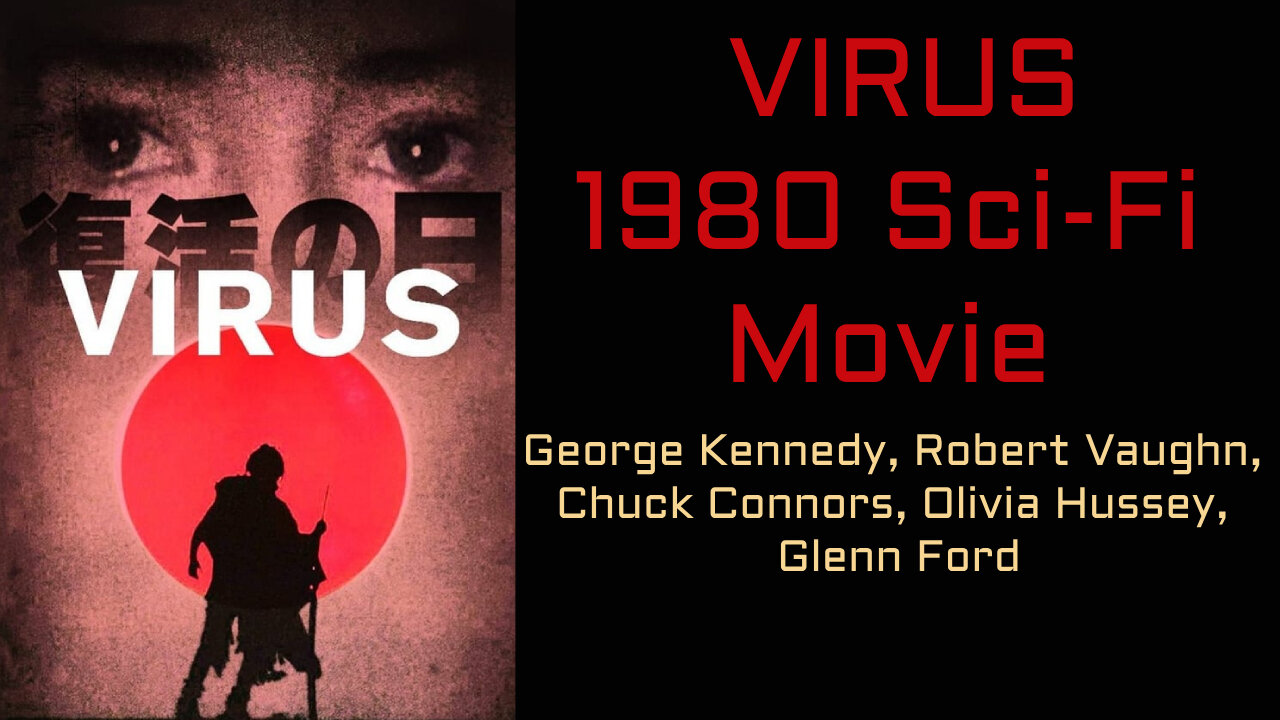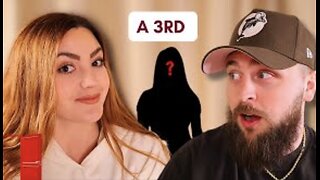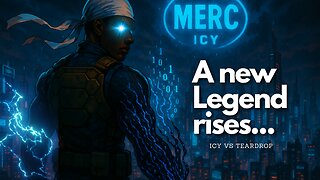Premium Only Content

Virus (1980 Japanese Sci-Fi Film)
Virus, known in Japan as Fukkatsu no Hi (復活の日, lit. "Day of Resurrection"), is a 1980 Japanese post-apocalyptic science fiction film directed by Kinji Fukasaku.] Based on Sakyo Komatsu's 1964 novel of the same name, the film stars an international ensemble cast featuring Masao Kusakari, Sonny Chiba, George Kennedy, Robert Vaughn, Chuck Connors, Olivia Hussey, Edward James Olmos, Glenn Ford, and Henry Silva.
At the time of its release, the film was the most expensive Japanese film ever made.
Plot
In 1982, a shady transaction is occurring between an East German scientist, Dr. Krause, and a group of Americans involving a substance known as MM88. MM88 is a deadly virus, created accidentally by an American geneticist, that amplifies the potency of any other virus or bacterium it encounters. The Americans recover the virus sample, which was stolen from a lab in the US the year before, but the virus is accidentally released after the plane transporting it crashes, creating a pandemic initially known as the "Italian Flu".
Within seven months, virtually all the world's population has died off. However, the virus is inactive at temperatures below -10 degrees Celsius, and the polar winter has spared the 855 men and eight women stationed in Antarctica. The British nuclear submarine HMS Nereid joins the scientists after sinking a Soviet submarine whose infected crew attempts to make landfall near Palmer Station.
Several years later, as the group is beginning to repopulate their new home, it is discovered that an earthquake will activate the Automated Reaction System (ARS) and launch the United States nuclear arsenal.
The Soviets have their own version of the ARS that will fire off their weapons in return, including one targeting Palmer Station. After all the women and children and several hundred of the men are sent to safety aboard an icebreaker, Yoshizumi and Major Carter embark aboard the Nereid on a mission to shut down the ARS, protected from MM88 by an experimental vaccine.
The submarine arrives at Washington, D.C., and Yoshizumi and Carter make a rush for the ARS command bunker. However, they reach the room too late, and Carter dies in the rubble of the earthquake, deep in the bunker. Yoshizumi contacts the Nereid and tells them to try to save themselves, adding that the vaccine seems to have worked “If that still matters”. “At this point in time, life still matters,” the captain replies, telling Yoshizumi to stay where he is: He might be safe.
Washington is hit by a bomb, and the screen fills with atomic bomb after atomic bomb exploding. From there the movie's ending diverges based upon the two cuts. In the American version, the screen goes black for a moment, and the end credits roll over footage of the Antarctic and a poignant song sung by a lone woman’s voice. The refrain is, “It’s not too late...” In the Japanese version, Yoshizumi survives the blast and walks back towards Antarctica. Upon reaching Tierra del Fuego in 1988, he finds survivors from the icebreaker, immunized by a since-developed vaccine. He reunites with the woman he fell in love with, they embrace, and Yoshizumi declares "Life is wonderful."
Cast
Masao Kusakari as Dr. Shûzô Yoshizumi
Tsunehiko Watase as Yasuo Tatsuno
Sonny Chiba as Dr. Yamauchi
Kensaku Morita as Ryûji Sanazawa
Toshiyuki Nagashima as Akimasa Matsuo
Glenn Ford as President Richardson
George Kennedy as Admiral Conway
Robert Vaughn as Senator Barkley
Chuck Connors as Captain McCloud
Bo Svenson as Major Carter
Olivia Hussey as Marit
Henry Silva as General Garland
Isao Natsuyagi as Commander Nakanishi
Stephanie Faulkner as Sarah Baker
Stuart Gillard as Dr. Edward Meyer
Cec Linder as Dr. Latour
George Touliatos as Colonel Rankin
Chris Wiggins as Dr. Borodinov
Edward James Olmos as Captain Lopez
Colin Fox as Agent Z
Ken Pogue as Dr. Krause
Alberta Watson as Litha
Background and production
In the 1970s, producer Haruki Kadokawa formed the Kadokawa Production Company. Its releases included Kon Ichikawa's The Inugamis and Junya Sato's Proof of the Man, with the latter having American cast members such as George Kennedy. Kadokawa began to develop films that were often based on literary properties held by Kadokawa's publishing arm.
The domestic box-office for these films was large, which led to Kadokawa putting US$16 million into the film Virus, making it the most expensive film in Japanese history on its release. The film was shot on location in Tokyo and various locations throughout Canada, including Kleinburg, Ottawa, and Halifax. The production was heavily supported by the Chilean Navy, who lent the submarine Simpson (SS-21) for use as a filming location. Submarine interiors were filmed on-board HMCS Okanagan (S74), an Oberon-class vessel that served in the Canadian Forces.
During filming, a Swedish cruiser used to transport crew was heavily damaged by a coral reef off the Chilean coast and had to be rescued by the Navy.
Janis Ian wrote the lyrics to the song "Toujours Gai Mon Cher (You Are Love)" and performs it. In the closing credits, it is erroneously listed as "Tourjours Gai Mon Cher". The music was produced by Teo Macero.
Release
Virus was released theatrically in Japan on 28 June 1980 where it was distributed by Toho.
The American version of the film was shown for review at the Cannes Film Festival in May 1980 as a "work-in-progress" print. The non-English language footage was dubbed into English for this release and it ran at 155 minutes. It was initially released to home video in the United States with a 108-minute run-time and was presented on television with a 93-minute running time. The original Japanese-language cut was released to home video in 2006 with English subtitles.
-
 12:40
12:40
Degenerate Jay
9 hours agoThe Perfect RoboCop Versus Terminator Game Needs To Be Made!
9542 -
 8:17
8:17
VSOGunChannel
13 hours ago $0.07 earnedYou Were Put on a Government Watch List || DECLASSIFIED
1.16K2 -
 35:14
35:14
Steph & Kayls
15 hours agoSpicing Things Up: How To Navigate Adding A Third To The Bedroom | Ep. 4
1.13K1 -
 28:59
28:59
Film Threat
10 hours agoTHUNDERBOLTS* EARLY REACTIONS | Film Threat After Dark
11.8K3 -
 8:02:12
8:02:12
Rebel News
4 days ago $210.68 earnedELECTION NIGHT LIVE: Rebel News Canada coverage with Ezra Levant, Sheila Gunn Reid & Special Guests
418K228 -
 1:24:54
1:24:54
Badlands Media
14 hours agoBaseless Conspiracies Ep. 130: Iberia Blackout, Green Energy Failures, and Grave-Robbing Government Experiments
78.9K29 -
 2:12:50
2:12:50
FreshandFit
7 hours agoModern Men VS Modern Women
49.9K32 -
 4:17:07
4:17:07
vivafrei
8 hours agoELECTIONS CANADA RESULTS LIVE STREAM WITH VIVA COMMENTARY!!!
129K140 -
 2:39:37
2:39:37
TimcastIRL
9 hours agoDemocrat LAUNCHES IMPEACHMENT Against Trump Citing Deportation, Abrego Garcia Case | Timcast IRL
167K141 -
 2:17:27
2:17:27
IcyFPS
7 hours agoA new legend rises.. Icy vs Teardrop | @playoffthegrid | Team MERC Grind |
30.4K2